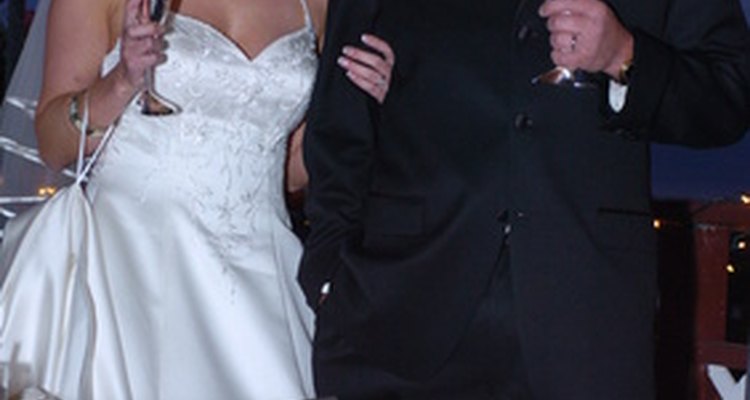
Welcome to the family speeches are often used at weddings and engagement events to welcome a new person to a family through marriage or a civil union. This type of speech can be funny, sentimental and sometimes very emotional depending on the circumstances and the person giving the speech. Welcoming a new person to a family is often the duty of the parents or siblings of the bride or groom. This topic can also be included in the speeches made by the maid or matron of honor or the best man at the wedding reception.
Write an outline of the speech in order to see how it flows and to ensure that you include the points that are most important to you. Consider the people who will be at the event where the speech will be read. Include information that is appropriate for the audience of the event. For example, if you are giving the speech at an informal engagement party that includes mainly friends of the future bride and groom you could include stories that are a little more risque.
Write out the speech in its entirety. Welcoming a person to the family is a topic that has a lot of sentimental meaning, so include information about how the couple met, your first impressions of the new family member, touching anecdotes, funny moments or anything else that strikes you as being personalized towards the couple.
Read the speech to a family member or close friend and ask for their feedback. Keep an open mind when listening to them if they have changes, as they are likely trying to help you make the speech better.
Practice the speech in front of friends, family members or a mirror in order to work on your delivery. The speech should not go longer than five-to-ten minutes in order to keep the attention of the guests. Try to make eye contact with the people you are giving the speech to and do not read it too quickly or you may not be understood. Ask for feedback on your body language when you are done. If you had any distracting mannerisms, ask the people watching you practice to tell you about them.
Related Articles

Order of Wedding Toasts

How to Build Trust in Relationships ...

How to Compose a Sympathy Message that ...

How to Emcee at a Rehearsal Dinner

How to Write a Man of Honor Speech

How to Give a Wedding Reception Speech

Positive & Negative Communication Skills

Order of Events for a Non-Religious ...

Maid of Honor Speech Ideas for Sisters

How to Make a Toast to the Bride From a ...

How to Toast the Mother of the Bride

How to Be a Good Usher at Social Events

Alternatives to Wedding Speeches

Creative Maid of Honor Speech Ideas

How to Explain Something Clearly

How to Include Grandparents in a ...

Characteristics of Good Listening Skills

Mother of the Bride Wedding Speech Ideas

How to Overcome Defensive Communication ...

Welcome Ideas for a Graduation Speech